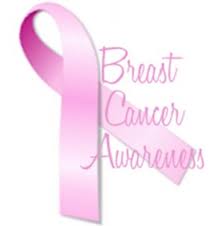Sources: JAMA (Journal of the American Medical Association) 2013;309(8):800-805; National Cancer Institute, SEER Cancer Statistics Review
 ADVANCED breast cancer, or metastatic breast cancer (spread through the body) effectively tripled among women younger than 40 between 1976 and 2009. These are women whose cancer had already spread by the time it was diagnosed. In this small, but statistically significant trent, 800 women between age 25 and 39 are now being diagnosed with advanced cancer as compared with 250 a year in the mid-1970s.
ADVANCED breast cancer, or metastatic breast cancer (spread through the body) effectively tripled among women younger than 40 between 1976 and 2009. These are women whose cancer had already spread by the time it was diagnosed. In this small, but statistically significant trent, 800 women between age 25 and 39 are now being diagnosed with advanced cancer as compared with 250 a year in the mid-1970s.
Researchers analyzing trends in cancer rates have published their findings in a recent issue of JAMA. Among the more troubling things they found were: that the rate of cancer incidence has gone up fastest in younger women — ages 25 to 34; and, that the trend affects women of all ethnic backgrounds, in rural areas as well as cities, and it has been accelerating in recent years. Because young age itself is an independent adverse prognostic factor for breast cancer, and the lowest 5-year breast cancer survival rates as a function of age have been reported for 20- to 34-year-old women. The most recent national 5-year survival for distant disease for 25- to 39-year-old women is only 31% according to SEER data, compared with a 5-year survival rate of 87% for women with locoregional (non-metastatic) breast cancer.
Breast cancer is the most common malignant tumor in US adolescent and young adult women 15 to 39 years of age, accounting for 14 percent of all cancer in the age group. The individual average risk of a woman developing breast cancer in the United States was 1 in 173 by the age of 40 years when assessed in 2008. Young women with breast cancer tend to experience more aggressive disease than older women and have lower survival rates.
Rebecca H. Johnson, M.D., of Seattle Children’s Hospital and University of Washington, Seattle, and colleagues conducted a study in which breast cancer incidence, incidence trends, and survival rates as a function of age and extent of disease at diagnosis were obtained from 3 U.S. National Cancer Institute Surveillance, Epidemiology, and End Results (SEER) registries. These registries provide data spanning 1973-2009, 1992-2009, and 2000-2009. SEER defines localized as disease confined to the breast, regional to contiguous and adjacent organ spread (e.g., lymph nodes, chest wall), and distant disease to remote metastases (bone, brain, lung, etc).
Since 1976, there has been a steady increase in the incidence of distant disease breast cancer in 25- to 39-year-old women, from 1.53 per 100,000 in 1976 to 2.90 per 100,000 in 2009. The researchers note that this is an absolute difference of 1.37 per 100,000, representing an average compounded increase of 2.07 percent per year over the 34-year interval. And the trend shows no signs of stopping.
The researchers also found that the rate of increasing incidence of distant disease was inversely proportional to age at diagnosis. The greatest increase occurred in 25- to 34-year-old women. Progressively smaller increases occurred in older women by 5-year age intervals and no statistically significant incidence increase occurred in any group 55 years or older. Incidence for women with estrogen receptor-positive subtypes increased more than for women with estrogen receptor-negative sub-types.
The Lewis Law Firm has a history of representing women who are diagnosed with advanced breast cancer. If you are in Philadelphia or New Jersey and you or a loved one have been diagnosed with breast cancer contact the Lewis Law firm today for a FREE consultation.
